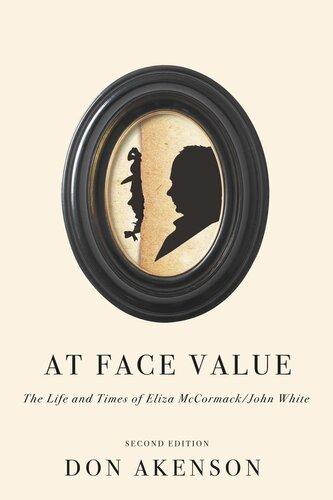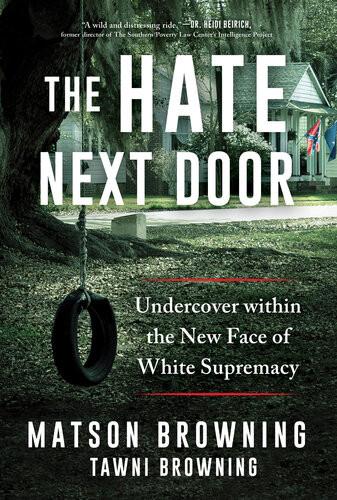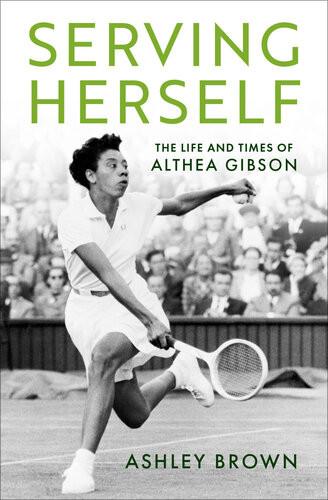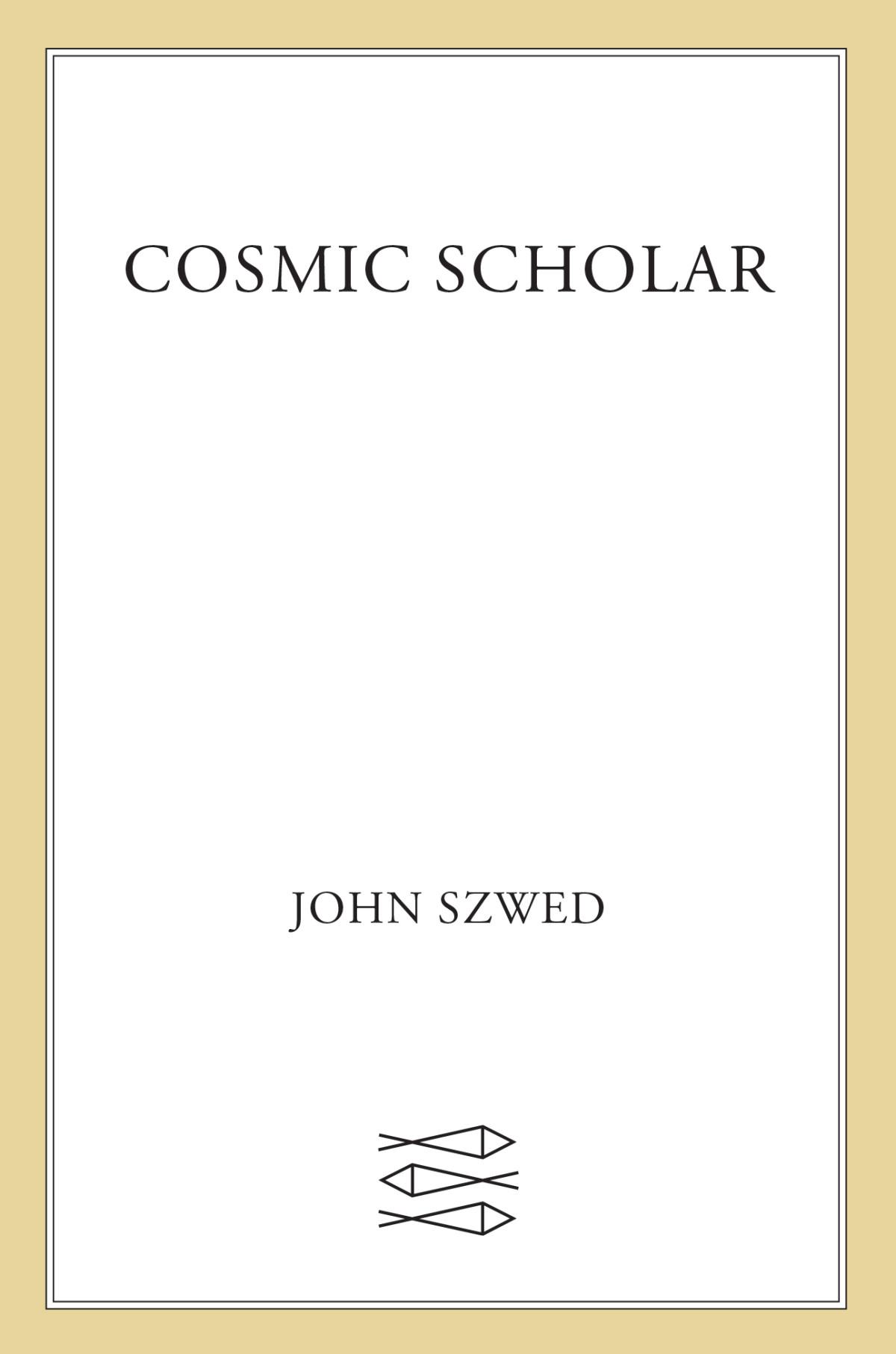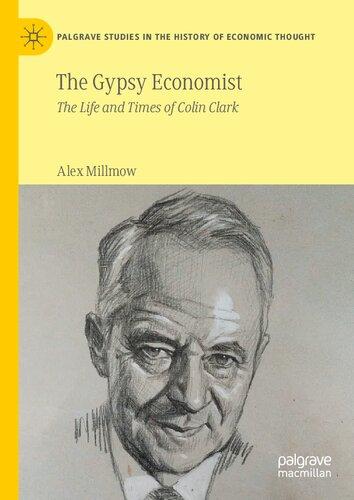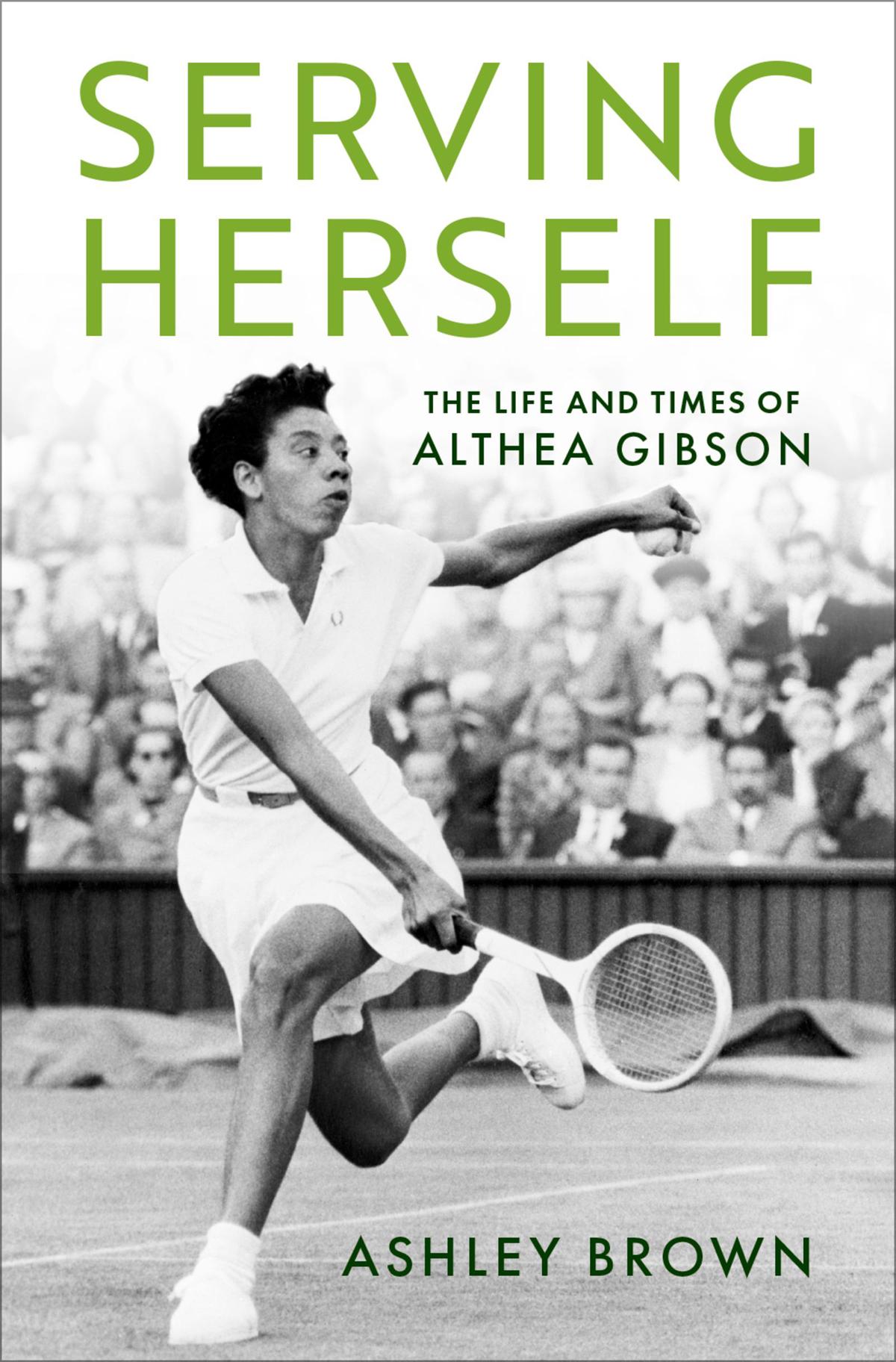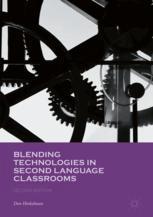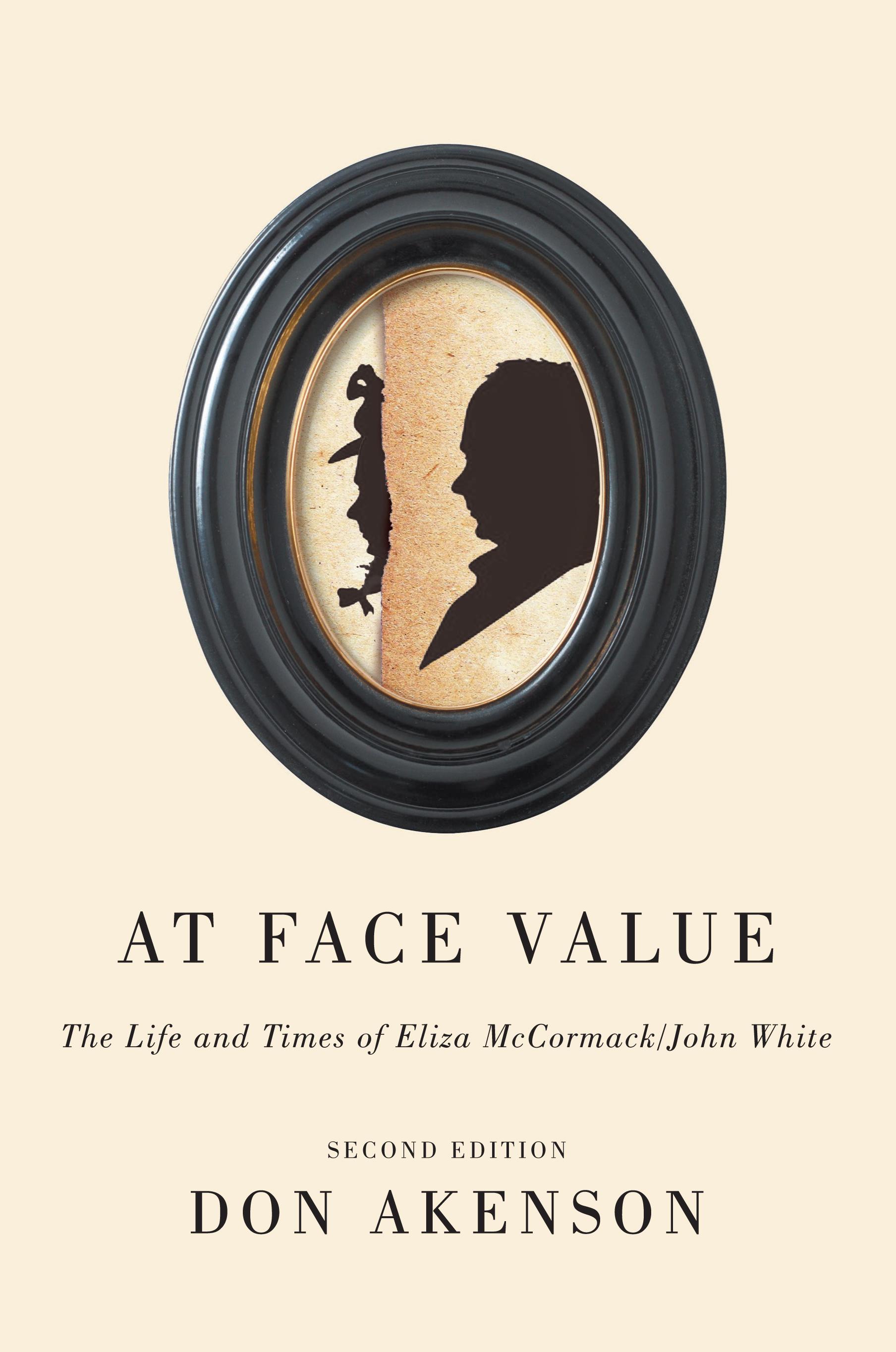Preface
Everyone knows that Agnes Campbell MacPhail was Canada’s first female member of Parliament, elected in 1921. That is incontestable. But consider …
When the former member of Parliament for East Hastings died in 1894, his funeral, conducted by the Grand Orange Lodge of Ontario East, “was remarkable above anything else for the number of ladies present.” That was what the local newspaper said, and it was what first called John White to my attention. White’s obituary mentioned his unusual sympathy for women and quoted his oft-stated dictum, “Give me the ladies on my side and I don’t care much for the men.” This was not a throwaway line: it was a considered principle of political solidarity. Given that women did not receive the vote in dominion elections until after World War I, it seemed that something more than electoral expediency might be involved here.
As I tracked White down, certain facts about his life made sense while others proved unsettling. The available documentation allows one to trace White from birth in County Donegal before the charnel months of the cholera epidemic of 1832, through a sadly deprived childhood that knew the Great Famine of the 1840s, and then to emigration to Canada. For a time White disappears. It is not until the mid-1850s that he resurfaces, north of Belleville, Ontario, with money in hand. He had entered an alliance with a woman of some means and become a big-time operator in a small-town way: cheese-factory and foundry owner, local politician, Orange Lodge official. In 1871 White surprised everyone by winning a dominion parliamentary election, and from then until 1887 he was a trustworthy Tory backbencher. Not a great career, but an interesting and in some ways puzzling one.
I let White sit for a while in my file of intriguingly elliptical Irish immigrants to Canada. Then I came across Eliza McCormack, a transvestite prostitute who had some high times and legal troubles in central Canada in the late 1840s and early 1850s. Her intersection with Ogle Gowan, the founder of the Orange Order in Canada, is described in The Orangeman.
Something clicked. I recalled McCormack was a County Donegal Protestant name (as was White) and that the McCormacks, like the Whites (with whom they intermarried), were poor farmers and artisans who had settled in small Protestant enclaves among the overwhelmingly Catholic and undeniably hostile Roman Catholic peasantry of that part of Ulster. Although the province of Ulster is usually thought to have escaped the worst effects of the Irish famine, parts of it, especially Donegal, were hard hit. Starvation and epidemics of typhus and relapsing fever raged through the population. Mortality records for the time are scarce, but one of the hastily scribbled notes made by an attendant at the temporary fever hospital in Donegal town lists among the dead one “John White, young man, about fifteen or sixteen.”
❦
One of the intellectual turning points of twentieth-century historical writing is Joan Kelly-Gadol’s 1977 essay “Did Women Have a Renaissance?” Her work prompts one to ask how any historical concept might be gender loaded. Inquiry can carry so many unexamined assumptions about gender that it obscures more than it illuminates. Historians of women have successfully argued that a patriarchal society has existed for most of the duration of Western history and that patriarchy has had consequences for both the position of women and the nature of the historical record. Evidence about the character and quality of women’s lives is only a small fraction of that available for men’s lives. Consequently, the historical methods that have been used in male history are inadequate for the task of recovering female history. New methods and new historiographic canons must evolve for dealing with women’s history, avid in my view these should be fused with the methods that have been applied to male history.
In biography, a good way to apply this gender sensitivity is to ask, “How would my view of my subject change if, in an effort to escape an unthinking gender bias, I assumed that he is actually a woman, or she a man?” This is not a bad exercise: if nothing else it prevents our falling into Carlyle’s trap of believing that history is merely the
collective biography of great men. Samuel Johnson was right when he said that “the business of a biography … is to lead the thoughts into domestic privacies and display the minute details of daily life,” but there is more to it than that. In his autobiography Mark Twain remarks, “What a wee little part of a person’s life are his acts and his words! His real life is in his head and known to none but himself.” The biographer must explore domestic and private facts and proceed from that basis to make a speculative entry into the subject’s heart, mind, and soul. This is why the best biographers are always doing two things at once: setting down the facts, big and small, and on the same pages and at the same time, writing a novel. Evaluating the fine work of biographer Richard Ellman, Edward Mendelson points out that “any attentive reader may find [Ellman’s] novel in the interstices of [the Joyce] book’s archival reportage. Its presence announces itself whenever Ellman (like all recent biographers) tells us what Joyce was thinking in such-and-such a city or what he felt when such-and-such happened.” This is the way modern biography works. “We have focused our gaze,” Mendelson concludes, “on the inaccessible inner reaches of authorial psyche without quite facing the fact that we have no way of making the inaccessible accessible. So we invent what we cannot know and call the result ‘biography.’” Good biography always has simultaneously deconstructed and reconstructed perceived historical reality.
It took a long time for the penny to drop, but finally I realized that the best way to make sense of the career of John White in Canada was to recognize that he was actually a she: that Eliza McCormack had taken on the deceased John White’s name and much of his persona. What a pinched, pained, and heroic life she must have led! At heart she was a loving and generous person, a loyal friend and a devoted provider for her family. Withal she had a straight from the shoulder honesty and a rural shrewdness that made her a character to be reckoned with. She was a postmodern (perhaps even a postfeminist) heroine in what was not yet a modern age.
Was John White really a woman? That is a question from male history and an inherently, if unconsciously, hostile one. The known facts of White’s life fit the hypothesis, but the reality can never be known and that is just the point: in a culture where most historical records have been made and preserved by males it is very difficult to get at the true stories about women’s lives. Heuristic biography can correct in part this historical imbalance. We know with certainty that
although the details of all save a very few female lives in the past are lacking, women played major roles in the history of Western society. As historians, we can either go back to stark fact-grinding biographies (which in their selection and arrangement of facts are fictive, but in an unconscious and unexamined manner), or we can try to get inside our subject’s mind – and in so doing accept the fact that biography, like many other forms of historical investigation, demands an energetic, self-conscious exercise of imagination. Perhaps we should put a different tag on biography. Stories of individual human lives might better be called speculative history or historians’ fiction. In any case, they should be accepted for what they are.
❦
I am grateful for financial support and encouragement in the writing of this book to the Social Sciences and Humanities Research Council of Canada, the School of Graduate Studies and Research of Queen’s University, the Directorate of Multiculturalism of the Government of Canada, the Tyrone Guthrie Centre, Annaghmakerrig, County Monahan, and Villa Serbelloni, the Rockerfeller Foundation, Bellagio, Italy. And I am particularly in the debt of two anonymous readers for McGill-Queen’s University Press for their constructive and critical assessment of an earlier draft of this manuscript.
The Real World
There are many things that tie the world together, and at the time of the birth of Eliza McCormack White the main tie was cholera. In 1826 the disease, endemic to the filthy villages and urban slums of the Indian subcontinent, escaped and travelled to Russia and from thence to central Europe. At the time, no one knew how cholera was spread, although a few sages suggested, correctly, that it was communicated through some discharge of the victim that entered the water supply. But if the causes of the pandemic were unknown, its effects were not. Victims experienced violent vomiting and severe diarrhoea – or rice water, as it was known – wrenching cramps and, more often than not, collapse and death within a few hours. Newspapers in the British Isles, the Canadas, and the United States charted the inexorable march of the dread disease from the Baltic countries to the Mediterranean basin and into central France. Its every step moved closer to the English Channel. Weekly cholera reports were a matter of general morbid fascination. One can imagine various governmental health authorities, like generals of the late Roman empire, placing flags on their maps and sadly shaking their heads at the inevitable approach of disaster. Cholera reached England in 1831 and by the fall of that year spread throughout the country. Because so many migrants persisted in emigrating to the Canadas from the British Isles, colonial administrators tried to set up quarantine procedures, but these did little good. In June 1832 a ship arrived at Grosse Isle having lost forty-two passengers to the disease en route. The vessel passed through the quarantine without impediment, and the disease began its westward trek across British North America. Montreal, Cornwall, Brockville,
Kingston, Belleville, and York (now Toronto) were stops on this funereal progress. Meanwhile, in almost perfect step with its advance across the Canadian colonies, cholera marched through Scotland and Ireland.
The great Irish cholera panic is the backdrop to the birth of Eliza McCormack White. The disease had first appeared in Belfast in mid-March 1832. A week later it was in Dublin and three days after that, Cork. By mid-June most but not all of the thirty-two Irish counties had reported an outbreak. The terror that ran through the countryside is easy to imagine in theory, but its magnitude is quite beyond anything experienced in the English-speaking world in the twentieth century. This incurable sickness was careening into a largely preliterate, poverty-stricken population that believed in the intervention of the supernatural in everyday life. The epidemic was beyond human explanation and, consequently, it could only be stopped by divine intervention.
Thus the “blessed turf.” On Saturday the ninth of June someone visiting the Roman Catholic chapel at Charlesville, County Cork, reported that the Blessed Virgin Mary had appeared on the chapel altar and left some ashes that were a certain protection against cholera. These ashes, she ordered, were to be tied into small parcels and taken to cottages in the area they were to be hidden in the rafters or chimneys. A relieved cottager would then take ashes from his own chimney or hearth, tie them into four parcels, carry them to four cottages that had not yet been visited, and so on. So desperate were the Irish peasants for solace in their hour of peril that in a mere four hours, between midnight and 4 am , the message spread across an area of more than forty square miles in the Cork region. And it kept traveling, transformed as it went. By Monday the eleventh of June it had reached Queen’s county to the north. Now it involved not ashes but “blessed turf.” The fundamental magic was the same, however – follow certain supernatural steps and avoid the plague. In six days, between the ninth and fifteenth of June 1832, the miraculous cure for the pandemic spread across three-quarters of the country. Only the mountainous and most rugged parts of Ireland were excepted. The magical cure reached Ballyshannon, County Donegal, on Wednesday the thirteenth of June. This was just a few miles from where Martha White, in the last days before childbirth, lived.
Martha White was a Protestant by habit. Her husband, John C. White, was one by fervent conviction. Like most Protestants, they
scoffed at the superstitions of the Catholic peasantry. Holy water, charms, and amulets were already suspect; now the papists had turf and ashes to keep themselves from illness. The Whites feared the twisting indignity of death from cholera just as much as their Catholic neighbours, but being Protestants, that had something more on their mind: they saw the scurrying of their Catholic neighbours from cottage to cottage – clandestine, often nocturnal movements – and concluded that the papists were up to something. The Whites were not alone in this. In places throughout Ireland, Protestants went to the police or to the local magistrates to report a Catholic conspiracy. Many Protestants took to staying up at night in fear of attack. But the Irish Catholics were not like the Hungarian peasantry who, in the belief that the nobility was spreading cholera, murdered members of aristocratic families. There were few recorded instances of violence. One of these was, however, in County Donegal, and John and Martha White resolved to keep alert.
Not that the Whites would have had anything to worry about even if the Catholics had taken to laying waste the nobility and gentry. White was a blacksmith with only a small cottage, an attached workshop that he called a foundry, and two acres of potato ground, all rented from the local landlord. Like even the poorest of Irish Protestants, the Whites considered themselves to be a step above the superstitious papists. In truth, however, the Protestants were every bit as given to portents (“freets”), faith healing, and the supernatural as the Catholics. John White Sr, like many of his fellows, spent hour after hour in a literal-minded reading of the Bible. Many nights he would hunch over the Scriptures and incline them on his lap so that the flickering light from the turf fire could illuminate the holy page. He would study in especial detail the prophetic books of the Old and New Testaments. Even during the summer months, when the days were long, he transferred a glowing piece of turf from his foundry to the cottage hearth so that he could fan a flame if the need to read God’s holy word took him after nightfall. His first response to the news that the Catholics were doing something strange with turf and ashes was to open the Book of Revelation and ponder the section describing the signs of the end times. This he read to Martha who, being less religious than he and massively pregnant, smiled and sighed heavily. “John, dear man, the end time I await is the deliverance of healthy baby boy.”
The Whites already had one son, John, named after his father. He had been born a year earlier and baptized by the rector of the
Established (that is, Anglican) Church in the parish of Donegal on 8 May 1831. The Whites adopted the local Gaelic terminology and called their first born John Oge, meaning young-John, roughly the equivalent of today’s “John Jr.” Babies in rural Ireland were judged as much by their size as by their mental alertness, and in this respect John Oge was a prodigy. He was as fat as a summer stoat and the pride of his father’s life. Sometimes John Sr would read aloud at night the section of the Old Testament that goes, “My love, you’re as beautiful as Jerusalem, as lovely as the city of Tirzah, as breathtaking as those great cities.” He called John Oge the apple of his eye, never realizing that he was borrowing the vocabulary of a Semitic love poem to a woman. The adoration of the beloved fit his sentiments exactly. “The best gift God could give us, Martha, would be another boy bairn, just like John Oge.”
Martha White was an unusually optimistic woman, which was just as well, for childbearing in Ireland in this era was the greatest single danger to a woman’s life. “I’m glad, John, that I can bear another son. And, if it isn’t a son, well, there will be more of them later on, so there will.”
A severely practical man, John Sr knew what he must do as soon as Martha’s labour began. The moment came in the small hours of the morning of the fifteenth of June. He hurried down the road to awaken an old widow who acted as midwife in Donegal town. That done, he stayed out of the way. By an unspoken rule, men were forbidden to be in the same room as a woman in parturition. John White Sr would have been more apt to break the commandment against murder than he would this fundamental law of the family. Some things were sacred. White retreated to his smithery and used a bellows to blow life into the embers on the raised blacksmith’s hearth. He put on fresh turf and soon there was enough light for him to read The Song of Solomon. As the pained cries of his wife became more frequent, his thoughts strayed from the holy word. To keep himself occupied he took a piece of strap iron and placed it in the fire. When it was red hot, he bent it double over his anvil and began beating it into something, he was not sure what. He repeated this exercise several times until, between the bangs of his big hammer, he heard the small cry of a newborn baby. Then complete silence fell.
Moving slowly, as if afraid of breaking something, the blacksmith left his forge and went to the door of the family cottage. He held his breath. Hearing nothing, he proceeded cautiously across the threshold.
By the light of the hearth, he could make out the black form of the midwife. In her arms, wrapped in a large shawl, was the baby. Thank God, a son! He looked through the dark room at Martha. She was breathing regularly, in long, exhausted pulls.
The blacksmith entered the room boldly now and saw clearly that this was a great strong baby. “Let me take the lad from you,” he said to the midwife. “There’ll be yet another blacksmith in this family!” He took the infant into his massive hands.
“Sir …” The midwife said. “Sir …”
“A great lad entirely! Don’t you agree?”
“Oh, yes, a great healthy child. Why, in two years, its strength will be that of a young bullock, no doubt. Only …”
“Only what, woman?”
“It’s a girl child, sir.”
White, startled, shook his head and held the new baby at arm’s length to examine it. “Are you sure?”
“As sure as there’s a God in heaven. I do know what I am about, sir,” she added tartly.
“Well, woman, I’ll just check.”
The midwife inhaled audibly and from the straw-filled bed Martha White tried to say something. Her husband was about to break one of the taboos of Irish rural life. Men never dealt directly with the genitalia of children, even of newborn offspring. Inside the mud cabins of the poorest peasantry, where the young frequently went naked until ages four or five, adult males were expected to stare past the generative portions of their children’s anatomy. It was for mothers and elder daughters to deal with such things.
This was too important to White. He unwrapped the infant and held it to the light. “You’re right, woman,” he announced to the midwife. “This is a girl. No doubt about it at all.” He swirled the baby back into the shawl and thrust her at the crone like a dissatisfied customer returning something to a shopkeeper.
“But look at the bairn again.” The voice was Martha’s, low and exhausted. “The child is special. Blessed. Don’t you see the sign?”
The blacksmith made a move toward the child. Before touching her he saw what his wife meant. It should have been obvious. The caul! The girl had the caul! Plastered around the top and back of her head was a layer of amniotic membrane that had not been torn away in the birthing. Throughout Ireland, this was considered a sign of good luck.
“She’ll never drown,” the midwife declared.
“She’ll have great good fortune!” Martha added from her bed.
“She’ll have the gift of talking and will make people see the world her way.”
There were a great many freets to pass on. John White knew most of them already, but he listened attentively. He was not a superstitious man, he told himself, yet he knew enough not to ignore good fortune. With plague sweeping the countryside and the suspicious activity of his papist neighbours, it was a relief to accept a little comfort. When the midwife had rattled off the last of her prophecies, he thanked her. He took the infant girl in his arms and looked at her with something akin to pride. Then, catching himself, he said gruffly, “Still and all, I’d rather it was a boy.”
In County Donegal, however, the two adamantine rocks of everyday life – grinding poverty and endemic religious tension – remained unmovable. If anything, the cholera epidemic of 1832 made these matters worse.
In the 1830s, the town of Donegal had slightly more than eight hundred inhabitants and was a deceptively pleasant place to look at. With its row of sea-side businesses fronting on a wharf and a town square – shaped like a triangle and called “The Diamond” – with a wide road leading inland from its apex, the town linked sea communications with inland roads. The town of Donegal (located, as official documents noted, in the Parish of Donegal, in the Barony of Tyrhugh, in the County of Donegal, in the Province of Ulster), had been there in one form on another for at least a millennium. The name Dun-nan-Gall, the fortress of the foreigners, refers to its Vikings settlers, but the town as the Whites knew it had been shaped by the “plantation of Ulster.” Early in the seventeenth century, the control wielded by the Gaelic chiefs of Ulster was finally broken and large parts of the north of Ireland were opened to settlement by Protestants from England and Scotland. In 1610 Donegal Castle, the last mansion of the great O’Donnell chiefs of the north, was granted to an English adventurer, Sir Basil Brooke. It remained in the family through the 1830s. Thus Donegal town became an ordered part of the Protestant plantation of Ulster. The town resembled a fortress, not physically but culturally. Donegal town was at the tip of the western salient of

Historical provinces of Ireland
the Protestant north. It was the very end of a narrow Protestant peninsula in a Catholic sea.
The White’s cottage-cum-foundry was only three-quarters of a mile west of the centre of town and the road was good. Armed with the excuse of needing a quarter pound of tea or some fresh-caught cheap
herring, Martha White went daily to town. She did not move with the slow step of a countrywoman; even when she was carrying one of her increasingly robust children she walked confidently, her head up, looking at everything with undisguised curiosity. On her way she passed a number of churches and meetinghouses. Not only was there a handsome Church of Ireland edifice, built in 1824 and located just off the Diamond (“Our church,” she told whatever uncomprehending infant child she held as they passed it), but also a thatched-roof Roman Catholic chapel (“shabby and that’s as it should be”), a subfusc oneroom Presbyterian meetinghouse, a Wesleyan hall, the Zion Chapel for one branch of Independents and, in converted houses, a chapel each for the Presbyterian Seceders and for another group of Independents (“I can scarcely keep them all apart”).
Martha, ever optimistic, promised her husband that more bairns would come. An emotionally controlled man, the blacksmith said little, brooding about God’s will. In the meantime Martha raised John Oge and his sister, whom they had christened Eliza. The brother and sister were reared virtually as twins. Each was strong. “Just look at the back on that lad,” John Sr would say. “And what about the girl?” was Martha’s reply. “She has a set of shoulders like a hill country teamster’s already,” adding quickly, “and the most lovely face.” At that time Irish boys and girls were not dressed differently until they were six or seven years old. Before that age anything from a shift made from an old shawl to pantaloons cut down from some adult’s garments served as everyday clothing. John Oge and Eliza looked to all the world like identical twins, and acquaintances of the family had a hard time telling them apart.
By the time John Oge and Eliza were four and three years of age, respectively, they were able to accompany their mother on her daily walks. A year later, they had become such great walkers that she would take them on rambles through the town and in the countryside.
In town they often saw some plump matron from Londonderry, or better still, from Scotland, visiting the town’s sulphurous spa. “Och, look at that fine lady,” Martha would note, and they would watch the matron pick her way around the town’s numerous potholes and piles of manure. More often than not, the visitor with the grand airs was not a real lady but the cossetted wife of some merchant. To Martha and the children it made no difference. These were creatures from the wide world beyond Donegal and that in itself was fascinating.

The town harbour could not have been more interesting to the trio if it had been a circus. To an outsider it was not much of a place, for at low tide it turned into muddy slobland. But fish, mussels, the detritus of seals, deal planks washed ashore from passing ships, bottles, and glass fishing buoys were for sale on the wharf. Martha and the two children always made a great show of examining everything, and now and then they purchased a small item. Martha always tried to buy from a Protestant. “Mother, why do we go with Mr Johnston, and not to that man Duggan?” John Oge once asked. “Because he is one of ours,” was the reply. In Donegal town, even to a four-year-old, that was explanation enough.
Half a dozen times a year a vessel of four hundred tons or more would be led into the harbour by the pilot boat. The town’s new pier could take vessels up to fourteen feet in draught, but the business was tricky. The ship had to lie outside the harbour until just the right sort of westerly wind blew. Then she would attempt to thread her way in. The moment the wind shifted properly, half the town came out and watched. For young children, like the two Whites, these occasions provided lessons in geography, economics, and history, and allowed the family to hear of people who lived very differently than the Protestant working class of Donegal town. Standing close to their
Vicinity of Donegal Town
mother in a line of observers, Eliza and John Oge soaked up information from the moment the vessel’s name and registration became visible – “Ah, she’s a Bristol boat, she is, but registered to a Liverpool firm,” a pipe-smoking observer would note, “I wager she’s been to Amerikay and back.” As the vessel was unloaded, heavy items being swung ashore by block and tackle, and lighter ones carried on the shoulders of seamen and local labourers garnering a day’s stevedoring wages, the nature and origin of each drew analysis. Weighty arguments were carried on by loungers who themselves had hardly twopence in their pockets but knew a surprising amount about the intricacies of sea trade. The most exotic of all cargoes was human, and this was an export business. In the spring and early summer of the year it was common for half a dozen or more locals, sometimes two or three full families, to board the vessels. Amidst great keening from those left behind, they would begin a voyage to Belfast or Liverpool, where they would take another ship across the Atlantic, to the Canadas, or, less often, to the United States. The emigrants were so determined that in the late spring of 1836, when a passing ship from Liverpool filled with emigrants was too large to enter Donegal harbour safely, twelve families arranged to be ferried out to her while she anchored off shore. She was a slave ship, taken over when British vessels were banned from the slave trade, who, with only a change in name, now took the Irish to North America.
“Mother, please, why if going on those ships makes everyone cry so much … why do they do it?” Eliza asked.
“Sometimes, little love, because they have to” was all that Martha could say.
Tiny as the world of the White family was – in all twenty-three thousand acres of the parish of Donegal, there were fewer than six thousand persons – the world that Eliza and John Oge saw was a great deal larger than that of most Irish children of the time. Martha White introduced the “twin-ones” (a term she and John Sr began to use when the children were four and five) to the rich past of the area as well as to the commercial bustle of the present. One of Martha’s favourite walks with Eliza and John Oge took them by two prominent landmarks. The first of these, in Donegal town itself, was the ruined but still imposing castle of the last of the O’Donnells. Although the roof was gone and the walls were crumbling, one was still awed by the grand hall, arched and imperious, and by the upstairs banqueting hall flanked by Gothic windows. Two sculptured chimney pieces spoke
of a level of wealth and craftsmanship no longer seen in Donegal. Next Martha would take the children a mile or so south of town where they entered the grounds of a ruined abbey. A derelict church and an abandoned graveyard were nearby. One of Ireland’s most important historical documents, the Annals of Donegal (more commonly known as the Annals of the Four Masters) was composed here in the 1630s. Most Protestants avoided the castle and the abbey: the first was a reminder of the era of Gaelic sovereignty before the plantation of Ulster, and the abbey, of course, had its roots in the preeformation era. Martha ignored these historical complications: instead, she told her children tales of chivalry of the kind that circulated as folklore in many parts of the British Isles and which Sir Walter Scott eventually collected, embroidered, and parlayed into a fortune.
Martha White was unusual among rural people in that she taught her children that the countryside was something beautiful. Almost all those nineteenth-century songs about Erin’s Green Fields were produced by urban exiles; for those living in the countryside, the scenery is where you work, not something to look at. This was the era when, elsewhere, the romantic idea of the sublime and the beautiful was gaining sway. When, on fine days, Martha took Eliza and John Oge to the top of a green hill, she talked to them of the surrounding beauty not in poet’s English but in a vocabulary full of Lallan’s words that came from her ancestral home in the Scottish lowlands.
To the locals, the rambles of Martha and the twin-ones became a regular feature of the landscape. The incumbent of the Established Church, a large red-faced man given equally to the principles of shortpreached sermons and long-laid port, referred to their walks as the “rogation of the three Magi” and he laughed loudly at his joke.
Children are great disarmers of suspicion, so when they encountered rural Catholics outside of Donegal town, Martha and her little ones were treated courteously, even though it was well known that John White was a strong anti-papist. By most standards the Whites were themselves poor, but the bulk of the Donegal Catholic peasantry was so horrifically pauperized that Martha felt positively wealthy in comparison. Take the matter of shoes. It was a source of great pride to Martha that she and the twin-ones always wore shoes, not just when they were going to church or on fair days. And their shoes matched. Outside of Donegal town, in summer, fully nine out of every ten adults they encountered were barefooted. And although Martha made all her children’s clothes and some of her own garments, she did so from
store-bought cloth. The country people made their own cloth, either from coarse linen (flax was then grown in the area) or from homefulled flannel. The Donegal women mostly wore grey dresses with dark shawls that had long fringes and, occasionally, gorse-dyed decorations. Grey clothing predominated in the area in the first half of the nineteenth century, for the knowledge of bright dyestuffs used in earlier centuries died with the retainers of the old Gaelic chiefs. Most of the men the White trio met wore shapeless trousers tied at the waist with a rope. They would sport up to half a dozen waistcoats under a darkcoloured jacket. So many layers covered the trunk of the average rural male that it was impossible to tell if he weighed seven stone or fourteen. For the most part these Catholic tenant farmers spoke Irish as their only language, but near the town many of them had acquired some English. “It’s the Irish we speak among ourselves,” one cottager told Martha. “But we have enough Scotch to speak till yourself.”
Sometimes a countrywoman would invite Martha and the twin-ones into her cottage. Almost half of the Catholic small farmers of County Donegal lived in tiny one-room cottages. Usually these had a smoke hole instead of a chimney and often they were without windows. The remaining population lived mostly in two-room cottages along with their livestock. A half-screen and a depression in the floor permitting animal urine to run outside demarcated the human side from the animal. John Oge and Eliza loved to visit these cottages. Not only could they watch mice play in the thatch, but they could observe the inevitable pig rooting about the house. If the sow had recently farrowed, there would be a delightful litter of piglets piling one on top of another as they suckled from their snoring mother. Martha White did not look down upon those forced to keep livestock in their cottages, but she was grateful her family was above such poverty.
Most Catholic peasants could not afford tea. The most common drink was a beverage called kilty made from barley, oatmeal, yeast, and water. This was fermented slightly to form a near-beer of no potency and little taste. Neither Eliza nor John Oge could be made to drink it. Sometimes a countrywoman would give the White children a cup of buttermilk or of watered skim milk. To the small cottier that drink was a great luxury, and Martha would make certain that the twin-ones expressed their gratitude.
On one occasion they were asked to join a cottager family at its chief (and probably only) meal of the day. This took place at about two o’clock in the afternoon. Like the White family, cottagers ate
masses of potatoes. In this particular household, the family table consisted of the front door, which was simply taken off its leather hinges and placed across four large creels used either for storage or for carrying things to market. The only other furniture was two low stools and some short fir logs for sitting. The family members took hot roasted potatoes from a rush bowl, peeled them, and took turns dipping them into salt water. This was done without the aid of cutlery. The salted pratties were all that the family consumed, save a shared mug of kilty. John Oge and Eliza were quick on the uptake. Even though they used cutlery at home they followed their hosts’ example and ate with great enthusiasm. When later that day they tried to do the same thing at their own evening meal, their father told them sharply to stop acting like a brace of heathen savages.
When Eliza and John Oge were, respectively, rising five and six, Martha White at last became pregnant again. “Thank the Lord!” John Sr proclaimed. “He hath heard the prayers of his servant.” Martha took to singing around the house. John Oge and Eliza tried to share in the happiness, but it was difficult, for really it was their parents’ pleasure, not theirs, and besides, weren’t there children enough in the house?
This third child was an easy birth, a healthy boy, and John Sr was delighted. Holding the new bairn close to his heart, he did a jig around the cottage and for good measure went next door to his smithery, where he danced several times around the forge, as if offering the child up to the god of the foundry.
Both parents doted on the new arrival and the twin-ones were thrown more and more onto each other for companionship. Frequently they took rambles on their own. Sometimes they did things that their mother never would have permitted, such as sneaking into the Catholic chapel to see if it was true that nuns were held captive inside. But they felt keenly the loss of their wonted guide. Often they would sit at some familiar spot where they had spent time with Martha and would try to tell one another what she might have said.
Less than a year later a fourth child was born, and again it was male. Now there were two sets of White children, the twin-ones and two infant boys. Martha had her hands full. Too young to understand the demands on their mother, the twin-ones resented the new arrivals and felt betrayed by her. When they learned that mother was yet again
with child they were angry and cast down. John Sr, who noticed their moping, quoted them scores of Bible verses by way of encouragement. He particularly liked the one that began “Let not your hearts be troubled …” and failed to see why it did not buck them up.
This time Martha’s labour lasted eighteen painful hours. Dursing that time John Oge and Eliza stayed with their father in the smithery. The two infant boys were handed over to neighbours. John Sr prayed, paced, read the Bible and at intervals tried to do some metal work. The twin-ones hardly moved. They sat unblinking on low stools, watching their father.
Presently by midwife cried, “Come quickly!” and their father disappeared next door. It was to be several years before they were told fully what had happened: The baby had been lodged upside down and had come forth at appalling cost. Martha suffered a prolapse, her insides exposed. In excruciating pain, she fell into a delirium from which she was delivered by a death that was sudden and merciful.
The infant survived, but he was cruelly misshapen. His head had not cleared the canal properly and the force needed to pull him free left his cranium permanently misaligned, a rude cylinder atop a backward sloping forehead.
In later years John White Sr told his children the whole story of their mother’s death and of the birth of their youngest brother. He ascribed everything to God’s will, struggling to put a brave face on the event and using a phrase that engraved itself upon Eliza’s mind. “Well, anyroad, it was the Almighty’s decision and sure it’s a great blessing the bairn was a lad.”
